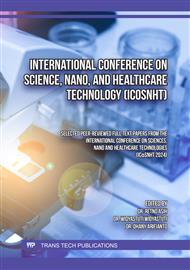p.1
p.9
p.17
p.27
p.33
p.41
p.55
p.65
Structure Analysis in the Development of Integrated Lumbar and Cervical Traction
Abstract:
Prolonged use of electronic devices such as computers, mobile phones, laptops, and tablets can lead to adverse health effects, particularly Low Back Pain (LBP) and Cervical Root Syndrome (CRS). Traction therapy, a non-invasive treatment involving pulling force to the lumbar and cervical spine, has proven effective in relieving LBP and CRS. This study presents the design of an integrated lumbar and cervical traction system that is ergonomic and easy to operate. To determine the ergonomics of traction, a risk analysis of body injury was carried out using the Rapid Upper Limb Assessment (RULA) method. This assessment was conducted and yielded a score of 2, indicating an ergonomic design. As a preliminary step, a traction frame design was carried out, followed by a structural analysis using ANSYS Workbench 2024 R2. The simulation results showed that with a load of 150 kg of a structural steel frame, the critical stress on the bed was 147.55 MPa and 191.47 MPa in the overall traction frame. Both values were lower than the tensile yield strength of structural steel, which is 250 MPa, confirming the safety of the full traction frame.
Info:
Periodical:
Pages:
1-8
Citation:
Online since:
November 2025
Authors:
Keywords:
Price:
Сopyright:
© 2025 Trans Tech Publications Ltd. All Rights Reserved
Share:
Citation:


